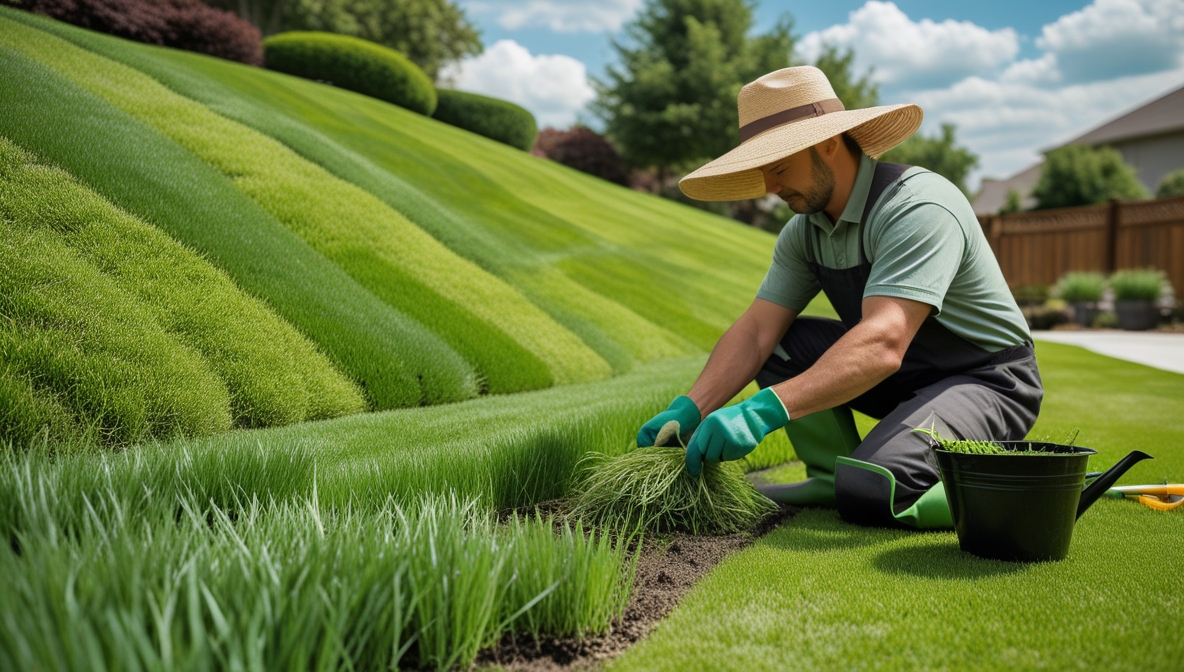Poa annua, often called “annual bluegrass,” is a tenacious weed that can quickly take over lawns, creating a patchy, unkempt look. While it’s frustrating to deal with, it’s definitely possible to get rid of it without harming the desirable grass species. This article will explore effective methods to target poa annua without causing collateral damage to your prized lawn.
Contents
Poa Annua: The Enemy Within
Poa annua is a sneaky pest. It’s a cool-season grass, which means it thrives in the cooler months. This makes it especially problematic as it quickly establishes itself in lawns and can be a real headache to get rid of. It’s fast-growing and spreads aggressively through seeds and stolons, making it a persistent problem. Its shallow root system is another factor contributing to its resilience.
Its ability to outcompete desired grass species for resources makes it a significant threat. It can crowd out the healthy grass, causing thinning and a visually unappealing appearance. If left unchecked, it can take over large areas of your lawn.
Spotting the Pest, Poa Annua
Identifying poa annua is key to successful control. Look for small, tufted clumps of grass, often with a slightly bluish-green hue. The leaves are usually thin and pointed, and it often appears in patches. The tiny size of the plants can make it easy to miss until it’s quite established.
Pay close attention to the density of the grass. If you notice a sudden proliferation of grass in one area that doesn’t match the surrounding lawn, it could be a sign of a poa annua infestation. Also, check for any signs of discoloration, or areas that appear to be thinner than the rest of the lawn.
Battling Poa Annua, Grass-Friendly
A crucial strategy is preventing the weed’s spread. Regular mowing and fertilization are important. A healthy lawn is often better able to resist invasion by this type of weed. Also, consider using pre-emergent herbicides to prevent seeds from germinating.
Instead of relying on broad-spectrum herbicides, opt for selective herbicides. These products are designed to target specific types of weeds, minimizing harm to your desired grass. But always carefully follow the product instructions to ensure you are using the right type of herbicide for the task, and always wear appropriate protective gear.
Winning the Poa Annua War
Consistency is key when battling poa annua. A single application might not be enough to eliminate it completely. Repeated applications of selective herbicides, combined with good lawn care practices, are often necessary. Ensure the soil is properly aerated and has good drainage to allow your healthy grass to flourish.
Consider using organic methods like corn gluten meal, which can help prevent weed germination. A healthy lawn is less likely to be invaded by weeds, and a balanced soil pH is important for your turf to thrive. Combining several of these approaches gives you the best chance of victory in the war on poa annua.
Poa annua can be a persistent problem, but it’s not insurmountable. By understanding its characteristics, using the right tools, and maintaining a healthy lawn, you can effectively control this weed and enjoy a lush, green lawn free from unsightly patches. Remember to always prioritize your lawn’s health and use methods that minimize harm to desirable grass.






